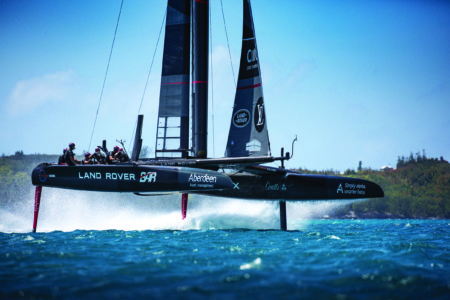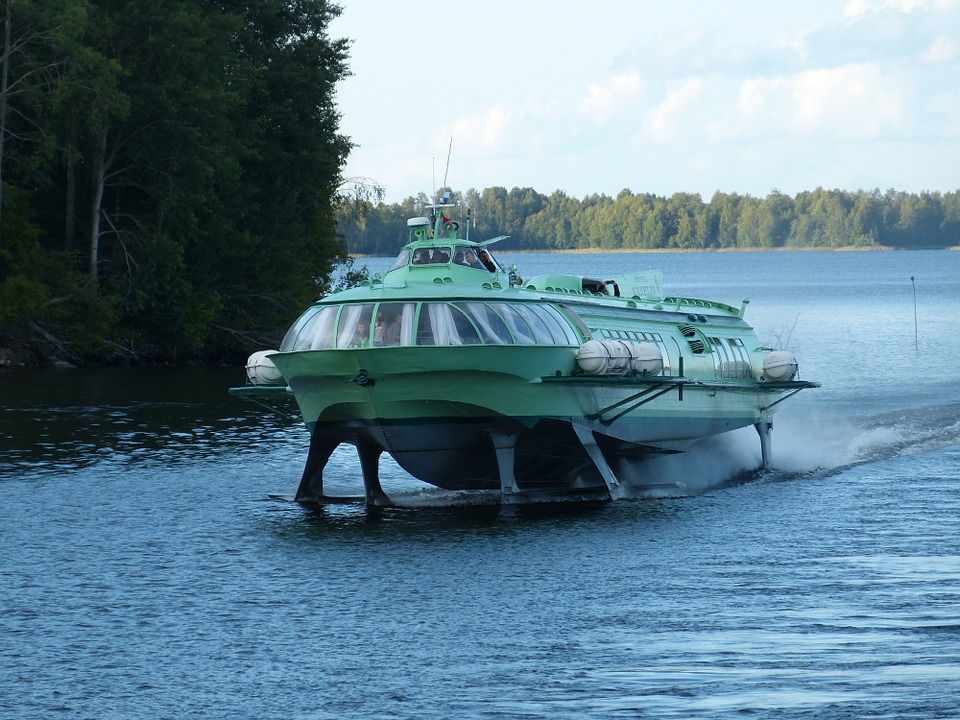Hydrofoils
How this technology helps boats fly almost like a plane
Hydrofoils are a rather incredible piece of technology that enable boats to lift out of the water. This removes the contact between the water and the hull of the boat, allowing them to reach high speeds. The idea of a hydrofoil has been around for decades but only recently has it been more widely applied in activities like sailing. Traditional sailboats use a keel to keep them balanced in the water as the wind pushes against the sail. This is essentially a counterweight in the water. A hydrofoil replaces the keel with a wing-shaped structure, which pushes down under the water and generates lift as the boat moves forwards and water rushes over it. As water is much denser than air, the rate of lift is about 1,000 times greater than that of a plane wing. At a high enough speed this will cause enough lift to raise the boat out of the water. Too much speed and the water under the boat will churn, causing it to stall and fall back into the water. Too little speed, however, and not enough lift will be generated. When used optimally, hydrofoils can enable a boat to go three-times faster than the wind speed. Often made from carbon fibre, hydrofoils must be raised, lowered and tilted in order to get the optimal amount of lift and speed.The use of hydrofoils has progressed quite a bit over the last few years. They had fallen out of favour for more general use due to their complexity and cost. However, they have recently been used in sporting contests like the America’s Cup, one of the world’s most prestigious sailboat competitions.
Flying Boats
How hydrofoils enable the Land Rover BAR to lift out of the water

- Size – The sail measures a huge 23.5m tall, while the boat itself is 8.5m wide and 15m long.
-
Weight – The whole boat weighs about 2,400kg and took 35,000 hours to build.
-
Power – A crew of six generates 1,200 watts of power to operate the boat.
-
Hydrofoils – Two hydrofoils, one under each side, allow the boat to generate lift as it speeds forward.
-
Communication – The British BAR team use bone conduction technology — where sound is generated as vibrations in the skull — to communicate while sailing.
-
Sensors – The BAR team uses 190 sensors and four video cameras in order to monitor their boat.
-
Speed – Hydrofoils can enable speeds of up to 100kph — three times that of the wind.
-
Lift – One side of the boat can be raised out of the water by altering the hydrofoils, enabling sharp turns.
DID YOU KNOW…
The first hydrofoil was built in 1906 by Italian Enrico Forlanini, enabling him to reach speeds of 68kph.
This article was originally published in How It Works issue 104 written by Jonny O’Callaghan
For more science and technology articles, pick up the latest copy of How It Works from all good retailers or from our website now. If you have a tablet or smartphone, you can also download the digital version onto your iOS or Android device. To make sure you never miss an issue of How It Works magazine, subscribe today!





